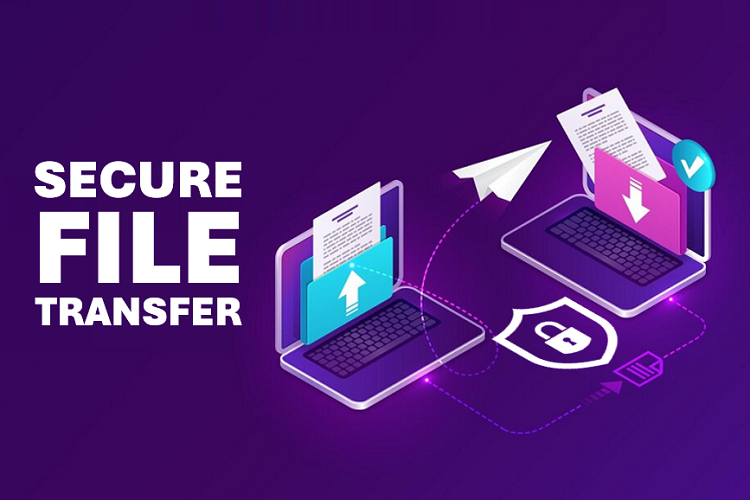In today’s digital age, businesses rely heavily on file transfer for various purposes such as sharing contracts, financial statements, and sensitive customer information. However, with the convenience of electronic document transfer comes the responsibility of ensuring the security and confidentiality of these files.

Ensuring Security in File Transfer: Best Practices
Data breaches and cyberattacks are on the rise, making it imperative for businesses to adopt best practices for file transfer security. In this article, we will explore essential strategies to help businesses safeguard their documents during the transfer process.
1. Implementing Strong Encryption Protocols
One of the fundamental steps in ensuring secure document transfer is implementing strong encryption protocols. Encryption is the process of converting data into a code to prevent unauthorized access. It ensures that even if someone intercepts the transferred document, they won’t be able to decipher its contents without the decryption key.
There are two primary types of encryption: symmetric and asymmetric. Symmetric encryption uses a single key for both encryption and decryption, while asymmetric encryption employs a pair of public and private keys. Both methods offer robust security when used correctly.
For file transfer, it’s advisable to use a secure and widely recognized encryption standard, such as Advanced Encryption Standard (AES) with a 256-bit key length. AES encryption is considered highly secure and is used by governments and organizations worldwide to protect sensitive information.
2. Establishing Access Controls and Permissions
While encryption is a vital component of file transfer security, it’s equally important to establish access controls and permissions to restrict who can view, modify, or share sensitive documents. Proper access management ensures that only authorized individuals or entities can access confidential information.
Key steps to effectively establish access controls and permissions include user authentication, role-based access, regular review and update of permissions, maintenance of detailed logs of document access and modifications, and the implementation of data loss prevention (DLP) policies. By establishing access controls and permissions, businesses can minimize the risk of internal threats and inadvertent data exposure.
3. Utilizing Secure File Sharing Platforms
To enhance file transfer security, businesses should leverage secure file sharing platforms designed with robust security features. These platforms provide a controlled and protected environment for sharing documents both internally and externally.
Secure file sharing platforms offer end-to-end encryption, access control, user authentication, file tracking, audit trails, and integration with existing tools. By adopting secure file sharing platforms, businesses can streamline document transfer processes while maintaining a high level of security.
4. Employee Training and Awareness
No matter how secure your file transfer methods and technologies are, they are only as effective as the individuals using them. Employee training and awareness play a crucial role in maintaining file transfer security. Employees should be well-informed about best practices and potential risks associated with document transfers.
Key aspects to consider for employee training and awareness include cybersecurity training, social engineering awareness, document classification, incident response, and regular updates. A well-trained and security-aware workforce can be a company’s first line of defense against document transfer vulnerabilities.
5. Utilizing Secure Channels for File Transfer
The final layer of defense in ensuring file transfer security involves using secure communication channels. Secure channels ensure that documents are transmitted safely from one party to another, reducing the risk of interception or tampering during transit.
Considerations for utilizing secure channels include virtual private networks (VPNs), secure email services, secure file transfer protocols, virtual data rooms (VDRs), and blockchain technology. By consistently utilizing secure channels for document transfer, businesses can fortify their document transfer security strategy. These measures, combined with encryption, access controls, employee training, and secure file sharing platforms, create a robust defense against potential threats and vulnerabilities.
6. Monitoring and Incident Response
An often overlooked but critical aspect of ensuring file transfer security is proactive monitoring and an effective incident response plan. While preventive measures are essential, it’s equally important to have the means to detect and respond to security incidents promptly.
Implement real-time monitoring of document transfer activities. This includes tracking who accessed documents, when and where they are accessed from, and any suspicious activities. Automated alerts can notify your security team of unusual patterns or unauthorized access attempts.
Develop a comprehensive incident response plan that outlines how to react in case of a security breach or data leak. This plan should include steps for containing the incident, investigating its scope, notifying affected parties, and recovering lost or compromised data. Regularly test and update your incident response plan to ensure its effectiveness.
Conclusion
By monitoring file transfer activities and having a well-defined incident response plan in place, businesses can swiftly mitigate the impact of security incidents and minimize potential damage.



